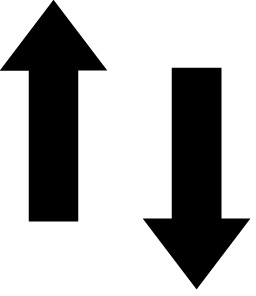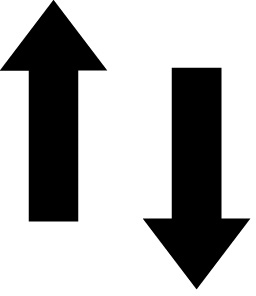
What Is Plate Tectonics and Tectonic Plates?
Quiz
•
Science
•
6th Grade
•
Hard
+1
Standards-aligned

Charles Martinez
FREE Resource
28 questions
Show all answers
1.
MULTIPLE CHOICE QUESTION
30 sec • 1 pt

Scientists think the continents once formed a large, single landmass that broke apart, and the continents slowly drifted to their present locations. What is the name given to this claim?
continental slope
continental shelf
continental drift
continental rise
Tags
NGSS.MS-ESS2-3
2.
MULTIPLE CHOICE QUESTION
30 sec • 1 pt
Florida is not close the edge of a tectonic plate. Therefore, which one of the following features does not exist in or beneath Florida?
tectonic plate boundary
tectonic plate
mantle
crust
3.
MULTIPLE CHOICE QUESTION
30 sec • 1 pt
The Red Sea formed as the African Plate moved apart from the Arabian Plate. Which type of boundary was involved in the formation of the Red Sea?
convergent boundary
stationary boundary
divergent boundary
transform boundary
Tags
NGSS.MS-ESS2-2
NGSS.MS-ESS2-3
4.
MULTIPLE CHOICE QUESTION
30 sec • 1 pt
The Rocky Mountains formed when the Pacific plate collided with the North American plate. Which of the following terms describes this process?
convergent boundary
transform boundary
divergent boundary
ridge push
Tags
NGSS.MS-ESS2-3
5.
MULTIPLE CHOICE QUESTION
30 sec • 1 pt
The asthenosphere is the part of the mantle on which the tectonic plates move. Which of these statements best describes a characteristic of the asthenosphere that allows the tectonic plates to move?
It is porous.
It is permeable.
It is rigid.
It is soft.
6.
MULTIPLE CHOICE QUESTION
30 sec • 1 pt
A plate boundary is a place where two tectonic plates meet. There are several types of tectonic plate boundaries. Which statement below shows the correct definition of a tectonic plate boundary?
At a divergent boundary, one plate sinks under another plate.
At a convergent boundary, plates slide past each other.
At a transform boundary, plates move apart.
At a divergent boundary, plates separate.
7.
MULTIPLE CHOICE QUESTION
30 sec • 1 pt
Convection currents in the mantle contribute to tectonic plate movement. What is a convection current?
the transfer of energy by direct contact
the transfer of energy by the movement of matter
the transfer of energy through a solid, such as the Earth’s crust
the transfer of energy from a region of lower temperature to a region of higher temperature
Tags
NGSS.MS-ESS2-3
Create a free account and access millions of resources
Similar Resources on Wayground

24 questions
Convection in the Mantle
Quiz
•
6th Grade

25 questions
Unit 6 Seafloor Spreading Review
Quiz
•
6th Grade

23 questions
#078 Chapter 4 Earth's Dynamic Surface Chapter Test Review
Quiz
•
6th Grade

25 questions
Tectonics
Quiz
•
6th Grade - University

25 questions
Plate Tectonics
Quiz
•
6th Grade

24 questions
Tectonic Plates
Quiz
•
6th - 8th Grade

23 questions
Chapter 6 Test Review
Quiz
•
6th Grade

28 questions
Unit 7 Investigating Plate Tectonics Review
Quiz
•
6th Grade
Popular Resources on Wayground

10 questions
Video Games
Quiz
•
6th - 12th Grade

10 questions
Lab Safety Procedures and Guidelines
Interactive video
•
6th - 10th Grade

25 questions
Multiplication Facts
Quiz
•
5th Grade

10 questions
UPDATED FOREST Kindness 9-22
Lesson
•
9th - 12th Grade

22 questions
Adding Integers
Quiz
•
6th Grade

15 questions
Subtracting Integers
Quiz
•
7th Grade

20 questions
US Constitution Quiz
Quiz
•
11th Grade

10 questions
Exploring Digital Citizenship Essentials
Interactive video
•
6th - 10th Grade
Discover more resources for Science

20 questions
Metals, Non-metals, and Metalloids
Quiz
•
6th Grade

10 questions
Exploring the Scientific Method
Interactive video
•
6th - 10th Grade

20 questions
Scientific Method Review
Quiz
•
6th Grade

10 questions
Exploring Chemical and Physical Changes
Interactive video
•
6th - 10th Grade

22 questions
Metals, nonmetals, metalloids
Quiz
•
6th Grade

20 questions
Cells! Cell Theory and Characteristics of Eukaryotes/Prokaryotes
Quiz
•
6th Grade

21 questions
States of Matter
Quiz
•
6th Grade

10 questions
Exploring the Basics of Density
Interactive video
•
6th - 10th Grade








